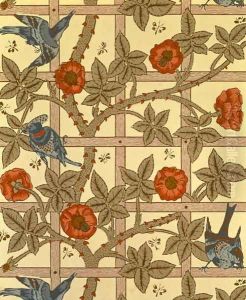Candace Thurber Wheeler Paintings
Candace Thurber Wheeler was an American textile and interior designer, recognized as one of the earliest female entrepreneurs in American design and a driving force behind the recognition of design as a professional field. Born on March 24, 1827, in Delhi, New York, Wheeler grew up in a family that valued education and encouraged her artistic talents.
Despite the limited professional opportunities for women in the arts during the 19th century, Wheeler's passion for design led her to become an influential figure in the textile industry. After her marriage to Thomas M. Wheeler and her move to New York City, she became deeply involved in the city's burgeoning design community. She was heavily influenced by the Arts and Crafts Movement and its emphasis on craftsmanship and design as a response to the industrial revolution’s mass production.
In 1877, Wheeler co-founded the Society of Decorative Art in New York, aiming to provide women with the skills to earn an independent income through the sale of their work. The society offered classes and opportunities in various crafts and played a significant role in the education and promotion of women in the decorative arts.
Wheeler furthered her impact on the design world by partnering with Louis Comfort Tiffany to found the decorating firm of Tiffany & Wheeler. This partnership was significant, as it brought together Wheeler's design expertise and Tiffany's artistic skills, leading to the creation of stunning interiors and decorative objects that were highly sought after by the elite of New York society.
Throughout her career, Wheeler wrote extensively on design and was a strong advocate for the role of women in the field. She published several books, including 'Principles of Home Decoration' (1903), which became a standard reference for interior design. Wheeler's work and her commitment to education for women helped to pave the way for future generations of female designers.
Candace Wheeler's contributions to American art and design were celebrated during her lifetime, and her legacy continued after her death on August 5, 1923. She is remembered not only for her own work but also for her role in advancing the professional status of women in the design community.
